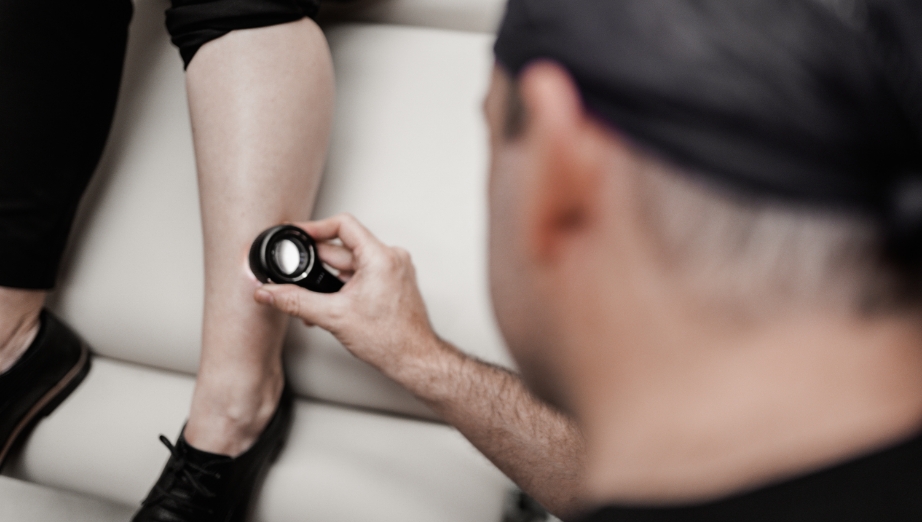What happens during a skin check with Dr Barney?
- Discussion of Medical History: Dr Barney will begin by discussing your medical history, including any previous skin conditions, family history of skin cancer, and your personal sun exposure habits and risk factors.
- Skin examination: You’ll need to undress to your underwear or clothing of your choice. Dr Barney will visually examine your entire body, including areas that are not typically exposed to the sun, such as your feet.
- Examination of Moles and Lesions: Dr Barney will pay close attention to moles, freckles and any other skin lesions present on your skin. He will evaluate the size, shape, colour, and border of each mole.
- Assessment of Skin Lesions: Our team will perform further evaluation for any suspicious or atypical moles or lesions. Sometimes, Dr Barney will recommend a procedure called a biopsy. This is where a tissue sample is taken for lab analysis.
- Discussion of Findings: The healthcare provider will discuss their findings with you, explaining any abnormalities or concerns. They may provide information on the type of lesion, the potential need for further testing, and the recommended course of action.
- Recommendations for Follow-Up: Depending on the findings, the healthcare provider may recommend periodic monitoring of specific moles, additional tests, or prompt treatment if necessary.

Have a Question?
If you have a question, get in touch and one of our staff will be in touch shortly.

TO LEARN ABOUT OUR FEES
Book A Consultation With Shellharbour Skin Clinic Today!



